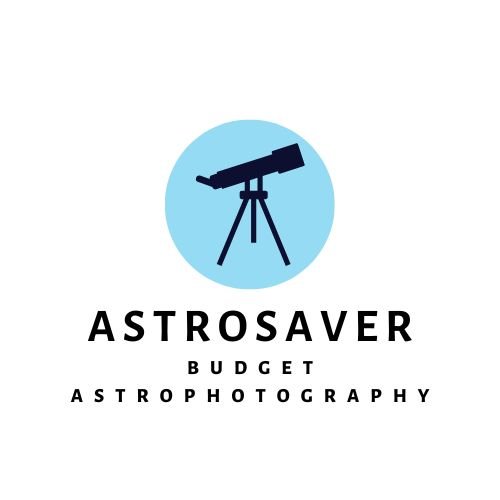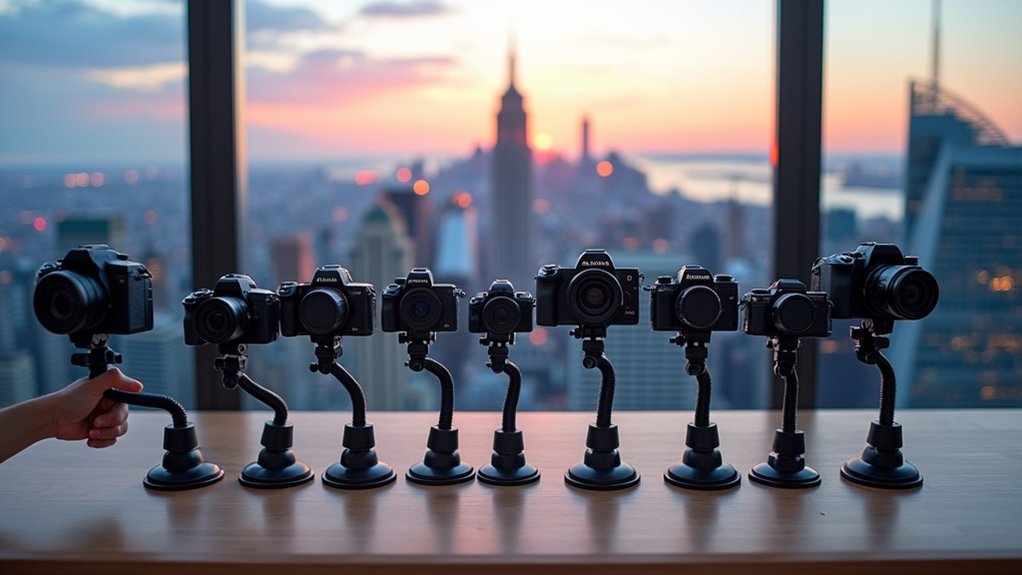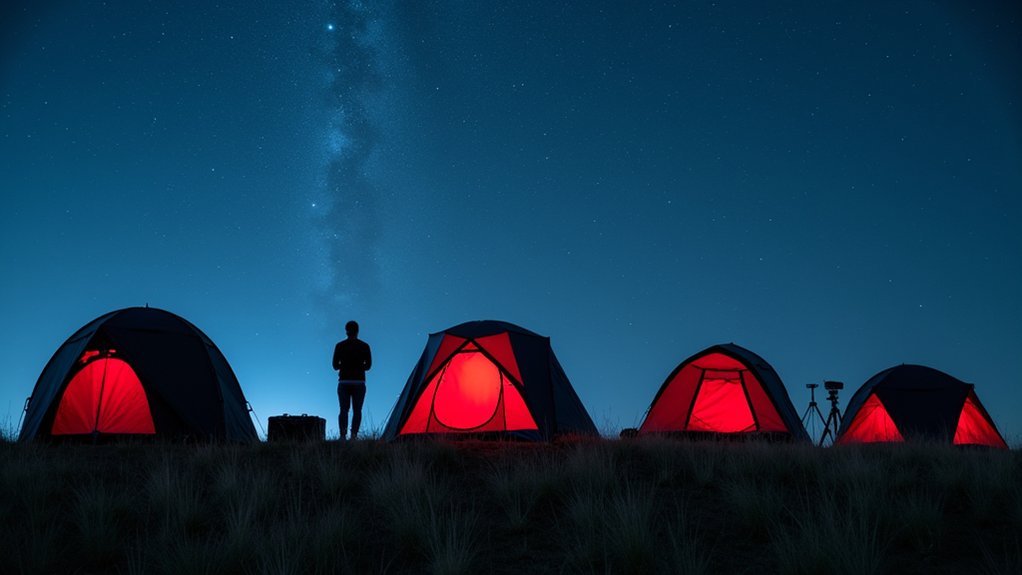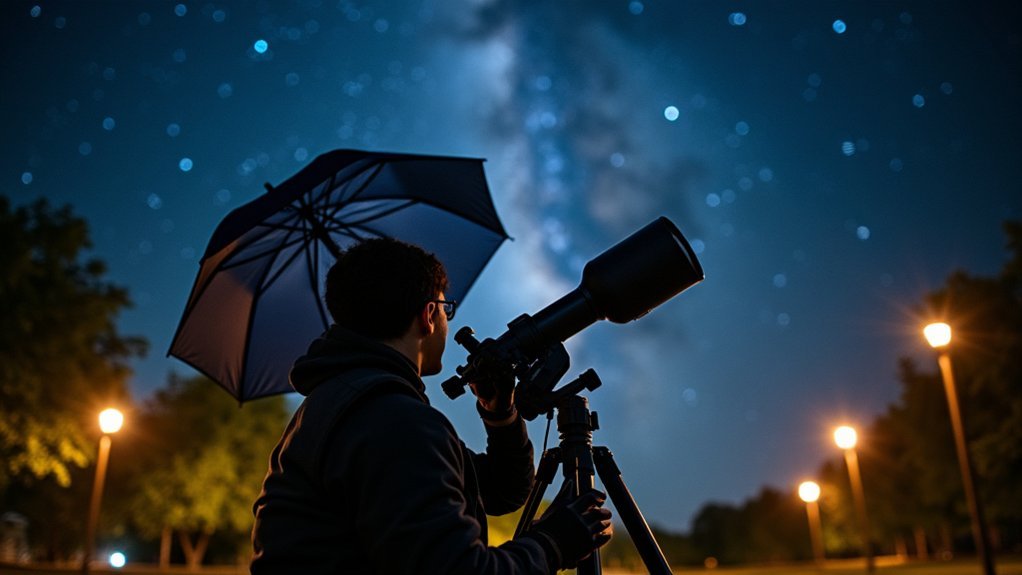Light pollution filters often disappoint urban astronomers because they can't effectively combat LED streetlights' broad spectrum emissions. While narrowband filters like Optolong UHC can improve nebula contrast, they struggle with galaxies and star clusters. You'll face diminishing returns as filters can't eliminate already-scattered light forming the sky dome. Premium filters rarely justify their high cost, particularly in heavily light-polluted areas where manufacturer claims are frequently exaggerated. The complete picture of filter limitations reveals why many astronomers feel let down.
Why Pollution Filters Disappoint Most Urban Astronomers

While light pollution filters promise to reveal the universe from city locations, they often lead to disappointment for urban astronomers facing modern lighting challenges.
You'll find these filters struggle against LED lighting's broad spectrum, rendering them less effective than with traditional sodium vapor lamps.
Your viewing experience varies dramatically by object type. Emission nebulae respond well, but galaxies and reflection nebulae show minimal improvement. Star clusters barely benefit at all.
The financial investment doesn't always deliver proportional results. Narrowband filters, though effective for specific targets, come with hefty price tags, while cheaper broadband options often underperform. Consider observing during later night hours when ambient light naturally decreases as people turn off their lights.
Urban infrastructure compounds these challenges. Buildings limit your viewing angles, and the mixture of light sources in cities creates a complex pollution profile that no single filter can fully address.
The False Promise of "Light Pollution Elimination"
Despite the marketing claims of "complete elimination" or "total sky restoration," no single filter can truly eliminate light pollution from urban skyscapes. The challenges are simply too complex and multifaceted.
You're fighting against inconsistent governance structures and a lack of standardization in light pollution management. While filters might reduce some effects, they can't address the fundamental issues: excessive artificial lighting, inefficient distribution, and inappropriate color temperatures that contribute to sky glow.
Even with technological advances like warmer spectrum LEDs and networked lighting controls, complete elimination remains impossible without thorough urban planning approaches. Studies show that LUNA products can help municipalities reduce light pollution while meeting their energy efficiency goals.
The most effective strategies combine dimming, proper shielding, and reduced color temperatures throughout entire municipalities—not just filtering at your telescope.
Don't be misled by exaggerated marketing. Filters help, but they're no substitute for dark skies.
LED Streetlights: The Filter-Resistant Revolution

The revolution in street lighting has created a new challenge for urban astronomers. As cities rapidly convert to LED technology, you're facing a more complex light pollution problem that filters struggle to address.
While LEDs offer impressive energy efficiency and longevity, their bright blue-rich light scatters more easily through the atmosphere, intensifying sky glow. Your traditional light pollution filters simply can't compensate for this wavelength distribution.
The paradox worsens as municipalities reinvest energy savings into additional lighting. Even "dark-sky compliant" LEDs contribute considerably to light pollution without proper shielding and directionality. Research from the GFZ German Research Centre revealed that in Tucson, Arizona, only 20% of nighttime light originated from street lights, highlighting other significant contributors to urban light pollution.
Smart technologies like StealthTransit's flickering LEDs synchronized with telescope shutters show promise, but widespread implementation remains years away.
Until then, you'll need to adapt to this filter-resistant lighting revolution or seek darker skies elsewhere.
Budget Filters vs. Premium Options: What You Actually Get
When shopping for astronomy filters, you'll notice a stark difference between budget options like SVBONY and premium brands such as Optolong.
Your investment in higher-end filters pays off through superior coating quality, which directly impacts contrast, background darkness, and the filter's ability to handle light pollution.
While budget filters like the Burgess Optical Broadband can offer reasonable views for beginners, premium options like the Optolong L-eXtreme deliver markedly better performance for serious urban astronomers through their advanced multi-layer coatings. Brands like Sky-Watcher produce UHC filters that provide good dark backgrounds while remaining relatively affordable compared to higher-end alternatives.
Budget Filters vs. Premium Options: What You Actually Get
Choosing between budget and premium light pollution filters presents urban astronomers with a considerable performance-versus-cost dilemma.
While budget options (under $50) provide basic light pollution reduction, premium filters ($200+) deliver enhanced contrast and spectral control that make a noticeable difference in urban settings.
You'll find stark differences in what you actually get:
- Premium filters effectively block wider wavelength ranges, particularly from streetlights and industrial sources that plague urban skies.
- Higher-end options feature precise spectral control, revealing nebulae details invisible with budget alternatives.
- Material quality in premium filters considerably reduces light scatter, improving overall image clarity.
- Budget filters provide adequate performance for casual viewing but often disappoint serious urban astronomers pursuing deep-sky objects.
Your specific observing location and targets should ultimately determine whether the premium investment makes sense for your astronomy journey. Understanding your local light pollution level is crucial when selecting the appropriate filter for optimal night sky observation.
Coating Quality Matters
Filter coatings represent the critical differentiator between budget and premium light pollution filters for urban astronomers. When you invest in high-quality anti-reflective coatings, you're paying for reduced internal reflections and fewer halos around bright stars.
The manufacturing method matters greatly. Premium filters utilize vacuum deposition to precisely apply multiple interference coatings that selectively target specific wavelengths. This multi-coating approach minimizes light loss while maximizing transmission of desired wavelengths—something budget filters can't match. K&F Concept filters feature double side Nano-Coating that significantly enhances image definition and clarity.
What this means for your viewing experience is tangible: better contrast in light-polluted skies, improved color preservation for astrophotography, and enhanced visibility of deep-sky objects.
Premium coatings also offer superior durability with scratch-resistant properties that extend your filter's lifespan.
Don't expect miracles, though—even the best coatings can't completely eliminate urban light pollution.
Urban Light Dome Physics: Why Filters Can't Cut Through

As urban astronomers peer skyward through their telescopes, they're often battling against an invisible enemy that filters simply can't defeat.
The physics behind urban light domes explains why your expensive light pollution filter might leave you disappointed. Unlike traditional atmospheric phenomena, light domes form when artificial light scatters through moisture and particulates, creating a diffuse glow that's fundamentally different from direct light sources. White light sources like LEDs produce significantly higher visual sky glow compared to other lamp types, making filtering even more challenging.
- The Purkinje shift makes blue-green wavelengths disproportionately visible in low-light conditions.
- Light pollution filters can't eliminate the already-scattered light that forms the dome.
- Local neighborhood lighting creates a "background noise" effect that filters can't distinguish from celestial objects.
- Different urban light spectra (LEDs vs. sodium) require different filtering approaches, with no one-size-fits-all solution.
Real-World Tests: Filter Performance in Major Cities
When theory meets reality, the results often surprise even experienced astronomers. Your filter that worked magnificently in suburban skies may prove disappointing downtown.
Field tests consistently show narrowband filters like the Optolong UHC outperform broadband options in heavy light pollution, but even they can't work miracles.
Narrowband filters offer better performance in light-polluted skies, but don't expect magical results even from premium options.
Modern LED streetlights present a particular challenge, as their broad spectrum emissions bypass many traditional filters. You'll find the same filter performing differently across various cities depending on local lighting ordinances and implementations.
Weather compounds these issues—humidity, particulates, and atmospheric turbulence all affect what you'll actually see.
Tests reveal that while filters like UHC and OIII can improve nebula contrast in urban settings, the improvements are often subjective and less dramatic than marketing suggests.
The Broadband Filter Myth in High-Pollution Areas

Despite spending hundreds on premium broadband filters, you'll find their performance in heavily light-polluted urban areas rarely justifies the cost.
Manufacturer claims about LED-blocking capabilities are largely exaggerated, as modern LED lighting emits across a spectrum these filters simply can't selectively eliminate.
While you might notice slight contrast improvements with some nebulae, don't expect the dramatic "night-sky transformation" that marketing materials often promise. These filters, unlike narrow-band nebula filters, struggle to effectively block the complex mixture of wavelengths that constitute urban skyglow.
Performance vs. Price Reality
The allure of broadband light pollution filters often crashes against the harsh reality of urban skies, creating a notable disconnect between expectations and results.
You'll quickly discover that despite their premium price tags, these filters struggle considerably with modern LED lighting that dominates urban environments.
When evaluating their cost-effectiveness, consider:
- High-quality filters can cost hundreds of dollars while delivering minimal improvement for galaxy observation
- Performance varies dramatically based on specific light pollution types in your area
- Objects with broad emission spectra (like galaxies) receive minimal enhancement compared to nebulae
- Color shifts introduced by filters often require additional post-processing work
The transition from astronomy-friendly Low Pressure Sodium lights to widespread LED streetlights has significantly worsened the challenges for urban astronomers.
Your astronomical budget might be better allocated toward transportation to darker sites or alternative imaging techniques that yield more substantial improvements for urban observers.
LED-Proof Claims Debunked
Many manufacturers boldly claim their broadband filters effectively combat LED light pollution, yet these assertions crumble under real-world testing in heavily light-polluted environments.
Unlike older sodium and mercury lamps with discrete emission lines, LEDs produce a continuous spectrum across wavelengths where nebulae and stars emit light. This fundamental characteristic creates an impossible challenge for broadband filters – they simply can't block unwanted light without also blocking the celestial light you're trying to observe.
When you use these filters in urban areas, you'll notice they provide only modest improvements at best. The physics is unavoidable: if a filter blocks the broad LED spectrum effectively, it also dims your target objects. Most users report that spectral blocking principle fails with LEDs because of their broad emission pattern that overlaps with astronomical objects.
This technological limitation means that "LED-proof" marketing claims vastly overstate what these filters can actually deliver in high-pollution environments.
Contrast Improvement Limitations
While countless advertisements promise miraculous results from broadband filters in urban settings, physics tells a more sobering story about their actual performance under heavy light pollution.
You'll quickly discover that broadband filters work primarily by enhancing contrast rather than increasing brightness, and this effect diminishes dramatically in highly polluted skies.
- Filters don't magically reveal invisible objects—they simply reduce background glow while maintaining object visibility.
- Modern LED lighting emits continuous spectrum light that broadband filters struggle to block effectively.
- Star clusters show minimal improvement since both stars and background pass through the filter's wide transmission range.
- Contrast enhancement becomes negligible when ambient light overwhelms the filter's blocking capabilities.
Many broadband filters are designed specifically to block the wavelengths from sodium and mercury vapor light sources, but these become less effective as cities transition to LED lighting.
For truly satisfying urban astronomy, you'll need to either seek darker locations or invest in specialized narrowband filters that target specific emission wavelengths.
When Narrowband Filters Fail: Testing Limitations

Despite their impressive capabilities in urban environments, narrowband filters face substantial limitations that aren't immediately obvious to new astrophotographers. In Bortle 8 zones, even the best narrowband filters struggle against modern LED lighting's broadband pollution that spans across the spectrum.
You'll find these filters excel with emission nebulae but offer little help when imaging galaxies or star clusters. The equipment requirements create another hurdle—you'll need a monochrome camera and filter wheel setup for ideal results, greatly increasing your investment.
Testing reveals that as cities shift to LED street lighting, traditional narrowband approaches become less effective. While you might capture the Orion Nebula from your backyard, many deep-sky objects remain hidden despite your filter arsenal. Some practitioners recommend using single band filters instead of stacking multiple filters, which often creates more problems than solutions.
This reality check is essential before investing in specialized equipment.
Color Shifting Problems in Urban Astrophotography
When shooting through urban light pollution, you'll often battle an unavoidable magenta cast that distorts your celestial images.
Modern LED streetlights present unique spectrum challenges that many traditional filters weren't designed to handle. These challenges create light pollution gradients that change gradually across your field of view, making uniform correction particularly difficult.
You'll need to commit significant post-processing time to correct these color shifts, often requiring specialized techniques for each different urban lighting environment.
Unavoidable Magenta Cast
Urban astrophotographers frequently encounter a stubborn magenta cast that plagues their images, creating an unwelcome purplish tint that diminishes the natural beauty of celestial objects.
This color shift is particularly frustrating because pollution filters often can't fully eliminate it.
You'll find this cast persists due to several factors:
- Camera sensors respond differently to urban light pollution, especially with high dynamic range scenes
- Atmospheric conditions including smog and pollution alter light transmission before it reaches your lens
- Long exposure times typical in astrophotography amplify color drift issues
- Post-processing software often struggles to correct these specific color imbalances
Many photographers choose to shoot in RAW format as it provides more flexibility for correcting color issues during post-processing.
Even with white balance adjustments and advanced color grading tools, completely eliminating the magenta cast remains challenging.
This limitation represents one of the most disappointing aspects of using pollution filters in urban environments.
LED Spectrum Challenges
As modern cities shift from traditional sodium vapor lamps to LED street lighting, urban astrophotographers face an increasingly complex challenge with color shifting. Unlike sodium lamps that emit at specific wavelengths, LEDs produce light across the entire spectrum, making traditional pollution filters nearly obsolete.
| LED Challenge | Impact | Solution Attempt |
|---|---|---|
| Broad spectrum emission | Filters can't selectively block | Narrowband imaging |
| Blue-rich content | Increased atmospheric scatter | Modified white balance |
| All-wavelength coverage | Cannot isolate celestial signals | Target emission nebulae |
You'll find your images suffering from persistent color casts that can't be fully corrected in post-processing. The blue components in LED lighting particularly worsen Rayleigh scattering, creating a diffuse glow across your field of view. Even narrowband filters, while helpful for emission nebulae, provide limited relief for reflection nebulae and galaxies. Local communities replacing streetlights rarely prioritize effective cutoff shields, further compounding the light pollution challenges faced by urban astronomers.
Post-Processing Time Commitment
Battling urban light pollution through post-processing demands considerably more time than processing images captured under dark skies. When artificial lighting saturates your images with unwanted color casts, you'll need to master several complex techniques to restore natural coloration.
- Gradient removal becomes essential as light pollution creates uneven backgrounds that require specialized software tools.
- Color correction workflows grow exponentially complex when dealing with multiple light sources (sodium, LED, mercury vapor).
- Signal-to-noise ratio challenges force time-consuming noise reduction processes without destroying detail.
- Calibration frame stacking (darks, flats, bias) becomes more critical but adds significant processing time.
The Bayer matrix in your color camera further complicates things, requiring additional interpolation adjustments that dark-sky photographers rarely need to address with such precision. Imaging broadband objects like galaxies becomes particularly challenging as they emit light at wavelengths similar to those blocked by filters, potentially resulting in less vibrant and colorful final images.
Filter Stacking Experiments: Diminishing Returns
While stacking multiple light pollution filters might seem like a logical approach to combat urban sky glow, experimental evidence suggests this technique often yields diminishing returns.
Each additional filter reduces your overall light transmission, often cutting signal from your target object along with the unwanted light pollution.
Adding filters is a balancing act—while fighting light pollution, you're also blocking light from your target.
You'll notice that stacking narrowband filters with broadband ones can actually create more problems than it solves.
The accumulated filtering might introduce color shifts that require extensive post-processing correction. More concerning is the noise accumulation that occurs when you're forced to increase exposure time or ISO to compensate for the reduced light.
Your tracking mount's performance becomes even more critical with filter stacks, as any slight imperfection gets magnified through longer exposures.
For most urban astronomers, a single quality filter paired with thoughtful exposure stacking delivers better results than filter combinations. Unlike filter stacking, live stacking technology allows for real-time image enhancement while maintaining clarity and detail of celestial objects.
The Economics of Disappointment: Cost vs. Benefit Analysis
Many urban astronomers face a sobering financial reality when investing in light pollution filters. The equation simply doesn't balance – you'll spend $100-300 on quality filters that deliver increasingly diminishing returns as cities shift to LED lighting technologies.
When evaluating these investments, consider:
- The initial cost plus maintenance expenses rarely justifies the modest viewing improvements.
- Filters' effectiveness continues to decline as cities upgrade to broad-spectrum LEDs.
- Most filters hold poor resale value, turning them into sunk costs.
- Alternative solutions like occasional dark-site visits often provide better value.
The limited market for these specialized tools means manufacturers can't achieve economies of scale, keeping prices high while benefits remain marginal.
You're fundamentally paying premium prices for increasingly outdated technology in a losing battle against modern lighting.
Dark Site Travel vs. Filter Investment: Hard Numbers
When urban astronomers crunch the actual numbers, the cost comparison between traveling to dark sites and investing in filters reveals some surprising truths.
While high-quality filters can cost hundreds of dollars upfront, they provide ongoing benefits for urban observers who can't frequently escape light pollution.
Consider your long-term viewing goals. A $200 narrowband filter might seem expensive but offers value through repeated use for emission nebulae.
Invest wisely in your sky access—the right filter becomes your permanent portal to cosmic wonders.
Meanwhile, regular dark site trips—factoring in gas, accommodations, and time—could exceed $1,000 annually.
For occasional observers, traveling to Bortle 3-4 skies delivers superior results across all celestial objects.
However, if you're primarily viewing emission nebulae weekly from your backyard, a quality narrowband filter represents a better investment than monthly dark site excursions. Hydrogen Alpha filters particularly excel at revealing detailed starlight and emission nebulas even through significant urban glow.
Frequently Asked Questions
Can Filters Damage Telescope Optics With Prolonged Use?
No, light pollution filters won't damage your telescope optics with extended use. They're made from durable materials specifically designed for optical clarity and safe long-term application when properly fitted to your equipment.
How Often Should Pollution Filters Be Cleaned or Replaced?
You should clean your pollution filters monthly with a soft brush or compressed air. Replace them when you notice coating wear or reduced performance—typically every 2-3 years depending on your local pollution levels.
Do Filters Perform Differently at Varying Temperatures or Humidity Levels?
Yes, your filters' performance will shift at different temperatures due to refractive index changes, and high humidity can cause condensation on surfaces, reducing effectiveness. You'll need proper storage and maintenance to preserve optical quality.
Can Filters Be Combined With Computerized Tracking for Better Results?
Yes, you'll find that combining filters with computerized tracking enhances your viewing experience. While filters improve contrast, tracking keeps objects centered in your eyepiece, allowing for steadier observation and more effective light pollution reduction.
Are There Pollution Filters Specifically Designed for Planetary Observation?
No, pollution filters aren't designed for planetary observation. You'll find better results using color filters like Baader Contrast Booster or Semi-APO that enhance specific planetary features without disrupting the planets' natural brightness.
In Summary
You've probably discovered that pollution filters rarely deliver the promised "dark sky experience" in urban settings. They can't overcome the physics of light domes or combat modern LED lighting. Rather than investing hundreds in filters with marginal benefits, you'll find greater satisfaction by redirecting those funds toward occasional dark-site visits. Don't chase technical solutions to what's fundamentally an environmental problem—sometimes it's worth making the drive.





Leave a Reply